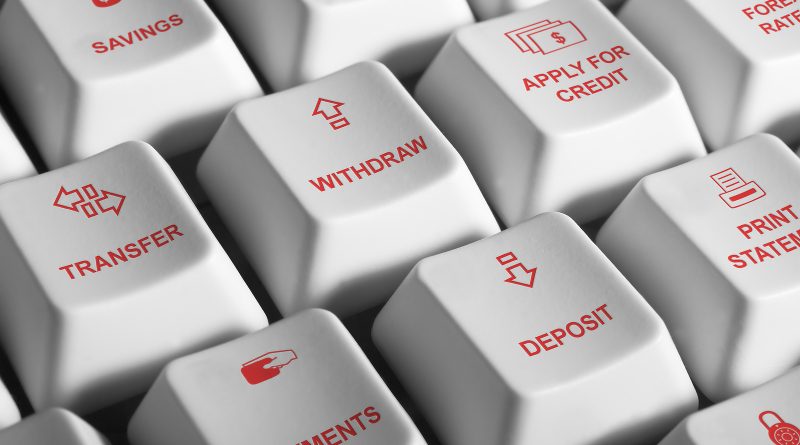Banked population is on the rise, latest BSP survey shows
The share of Filipino adults who own an account climbed to 29% in 2019 from 23% in 2017, according to the recently released results of the 2019 Bangko Sentral ng Pilipinas (BSP) Financial Inclusion Survey (FIS).
Ownership of an account held in a formal institution including banks, e-money issuers, and microfinance institutions (MFIs) is a basic indicator of financial inclusion.
The 2019 FIS was conducted in February to March 2020 just before the imposition of the enhanced community quarantine in response to the coronavirus disease (COVID-19) pandemic. Accordingly, the survey results – even as they already suggest significant progress – do not yet reflect the accelerated adoption of digital financial services seen in the midst and in the wake of the pandemic.
The 6-percentage point increase in account penetration represents an additional 5 million Filipinos opening an account within that two-year period, a notable improvement from the 0.6 percentage point growth in 2017 from 2015. Growth was largely driven by e-money accounts which rose to 8% in 2019 from 1% in 2017. MFI accounts also grew from 8% in 2017 to 12%, on par with bank accounts which barely moved from 11.5% in 2017.
As uptake of e-money accounts significantly grew, so did the share of accountholders who use their account for payment transactions – such as fund transfers and bills payment – which more than doubled to 39% in 2019 from 18% in 2017.
Account ownership among the poorest (class E) almost doubled from 14% in 2017, well below the 23% national average that year, to 27% in 2019, closer to the national average of 29%. The top income group (class ABC) posted an account penetration of 43% which is almost twice higher than in class E. While still significant, the account penetration gap in socio-economic class has considerably narrowed in 2019 compared to 2017 where class ABC posted account penetration almost four times higher than class E.
The number of Filipino adults who are unbanked is estimated at 51.2 million, out of a total adult population of 72 million in 2019. Lack of enough money remains the topmost reason for not having an account, as reported by almost half (45%) of the unbanked. This is followed by perceived lack of need for an account (27%) and lack of documentary requirements (26%). The survey revealed that only 40% of adults are aware of the basic deposit account (BDA), a low-cost, easy-to-open bank account introduced as a policy initiative of the BSP in 2018 designed to address the cited barriers.
The perceived lack of need for an account may be linked to the lack of awareness that an account can be a tool for convenient digital payments. Over 80% of the unbanked have various payment transactions. They receive benefits from the government and wages from employers, and they pay government fees, loan amortizations, utilities and bills. Yet survey showed that these transactions are predominantly made in cash. For instance, more than half (56%) of recipients of government benefits received the funds via cash or check while 60% of working adults do not have an account into which they can receive their salary. With the cooperation and support of government and private sector, receiving benefits and wages can be a strong incentive for the unbanked to open and use an account.
The survey also provided new insights on the use of mobile phones and the internet for financial transactions. Sixty-nine percent (69%) of adults have a mobile phone while 53% use the internet. However, only 12% of mobile phone owners and 9% of internet users use their mobile phones and the internet for financial transactions. Moreover, 7 in 10 unbanked adults have a mobile phone which further represents an untapped opportunity for digital finance. Lack of awareness and trust are the main reasons for not making mobile or online financial transactions.
All these highlight the importance of financial and digital literacy as well as adequate consumer protection in promoting uptake of digital financial services. Toward this end, the BSP recently launched a communication campaign for digital literacy and cybersecurity awareness made particularly necessary as movement restrictions were imposed due to the COVID-19 pandemic. The BSP is also pushing for the immediate passage of the Financial Consumer Protection Bill to better equip regulators in promoting access to high quality financial services and protect the interests of the general public. Recently, the BSP launched its chatbot named BOB (BSP Online Buddy) for automated complaints handling to provide the public a more accessible and efficient means to engage the BSP on financial consumer concerns.
Digital connectivity is another important factor to unlock the full potential of digital financial services for financial inclusion. Survey results showed that digital divide, or the gap in terms of smartphone ownership and access to the internet, is evident in certain demographics. In urban areas, 6 in 10 adults are smartphone owners and internet users compared to 4 in 10 in rural areas. While 7 in 10 adults in Metro Manila have a smartphone and use the internet, this figure drops as we go farther from the capital (Balance Luzon – 6 in 10, Visayas – 4 in 10, Mindanao – 3 in 10).
Income is also a significant driver of digital divide: 8 in 10 adults in class ABC own a smartphone and use the internet compared to only 4 in 10 adults in class E. Rural areas, regions outside Metro Manila, and those who belong to lower socio-economic class are clearly at a disadvantage. Addressing the digital divide needs to be part of our broader inclusion efforts. Widely shared access to affordable and fast internet connection, along with universal access to a digital ID under the Philippine Identification System (PhilSys), will facilitate the scale and reach of digital financial services.
The pandemic has provided significant momentum to digital finance, as more Filipinos recognize and appreciate the benefits -and necessity- of transaction accounts and digital payments. The use of online banking, electronic fund transfers (PESONet and InstaPay) and QR code for day-to-day payments such as transportation have gained traction as a more convenient and safer alternative to cash transactions. Based on the BSP data, more than 4 million accounts were opened digitally from March 17 to April 30 while Metro Manila and other areas were under the ECQ.
The BSP will therefore continue to intensify its coordination with other government agencies such as the Department of Social Welfare and Development (DSWD), Labor and Employment (DOLE), and Transportation (DOTr) as well as the private sector (banks and fintechs) to promote widespread adoption of digital payments and transaction accounts. With this whole-of-nation approach and the pandemic-induced urgency to adopt digital payments, the BSP is confident that its target of 70% Filipino adults having an account by 2023 will be achieved.



